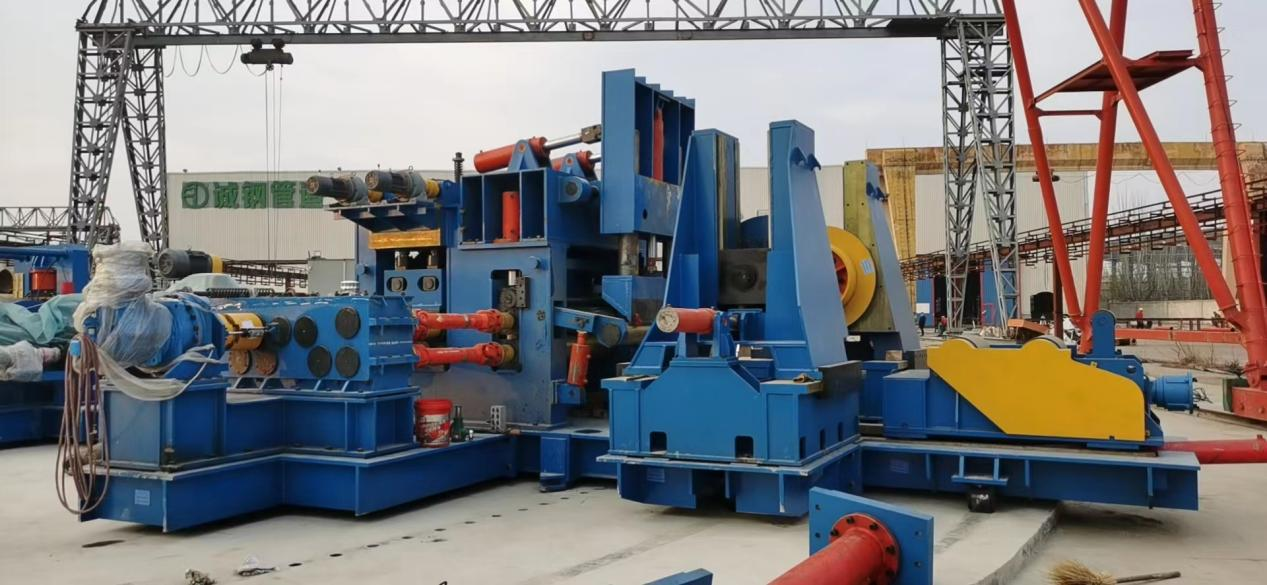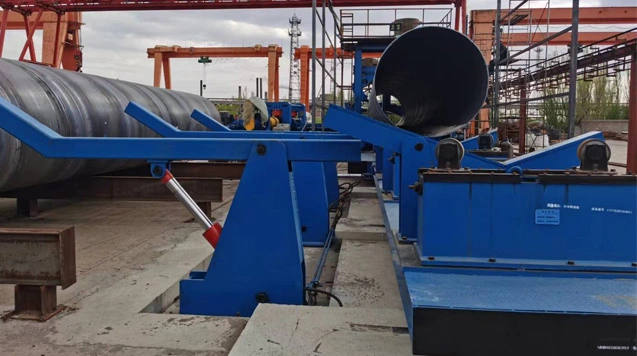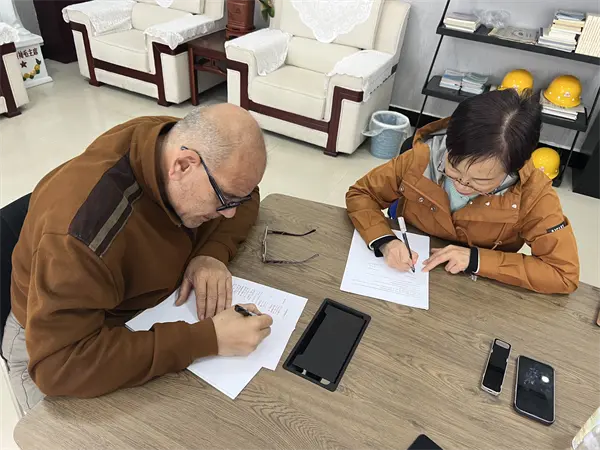×

Search
When it comes to selecting the right type of pipe for an industrial application, the options may seem overwhelming. Among the most commonly used varieties are spiral pipes and seamless pipes, each with unique manufacturing processes, applications, and advantages. In this article, we'll delve into the distinctions between these two types of pipes, focusing on key aspects such as manufacturing processes, applications, and performance. Additionally, we'll discuss specialized equipment such as the spiral welding pipe machine and spiral pipe welding machine, notably from brands like TianxiangHao.

Spiral Pipe
Spiral pipes, also known as helical pipes, are produced by spirally winding a hot-rolled steel strip or coil. The edges of the coil are welded together using a spiral welding pipe machine. This type of machine ensures that the weld seam runs along the entire length of the pipe in a continuous helical pattern. The process typically involves the following steps:
Preparation of Steel Strip: The strip is trimmed, cleaned, and flattened.
Forming: The strip is then wound into a spiral shape.
Welding: Using a spiral pipe welding machine, primarily from leading steel pipe making machine manufacturers like TianxiangHao, the edges of the spirally wound strip are welded together.
Cutting and Finishing: The continuous length of the pipe is cut into required segments, and further finishing is done as needed.
Seamless Pipe
Seamless pipes, in contrast, are produced through a process that avoids any welding. The manufacturing involves the extrusion of a solid billet, which is then pierced to form a hollow tube. The key steps include:
Billet Preparation: High-quality steel billets are cut to length.
Heating: The billets are heated to a high temperature until they become pliable.
Piercing: The heated billet is pierced using a mandrel to create a hollow tube.
Elongation and Sizing: The hollow tube is then elongated and sized to the required dimensions using various rolling and stretching techniques.
Spiral Pipe
Spiral pipes are primarily used for applications where the pipe does not need to withstand very high pressure. Common uses include:
Water Transmission: Ideal for large-scale water pipelines and irrigation systems.
Gas Transport: Suitable for the low-pressure transport of natural gas and other gases.
Structural Applications: Frequently used in structural applications like piling and in the construction of large structures such as bridges and buildings.
Seamless Pipe
Seamless pipes are generally used in applications that require higher pressure resistance and superior material integrity. They are common in:
Oil and Gas Industry: Critical for oil drilling and production, as well as in the transport of highly pressurized gases and liquids.
Power Generation: Used in high-pressure boilers and other high-stress environments.
Automotive and Aerospace: Essential for systems requiring high strength-to-weight ratios, such as fuel lines and hydraulic systems.
Spiral Pipe
Advantages:
Cost-Efficiency: Generally cheaper to produce, especially for larger diameters.
Versatility: Can be produced in a wide range of diameters and lengths.
Ease of Production: The use of a spiral pipe welding machine makes the production process relatively straightforward.
Disadvantages:
Weld Integrity: The welding seam might be a weak point, making it less suitable for high-pressure applications.
Material Limitations: Not ideal for high-strength materials or applications requiring extreme precision.
Seamless Pipe
Advantages:
Superior Strength: No weld seam means more uniform strength along the entire length of the pipe.
High Pressure Tolerance: Better suited for high-pressure and high-temperature applications.
Higher Durability: Generally more durable and less prone to failure.
Disadvantages:
Cost: More expensive to produce, particularly for larger diameters.
Manufacturing Complexity: The production process is more complex and equipment-intensive.
The choice between spiral and seamless pipes depends largely on the specific requirements of the application, including factors such as pressure tolerance, material strength, and budget constraints. Specialized machines like the spiral welding pipe machine from pipe production line china suppliers like TianxiangHao play a crucial role in producing high-quality spiral pipes efficiently.
Understanding these differences will help you make a more informed decision, ensuring that you select the right kind of pipe for your needs. Whether you need a cost-effective solution for a large-scale water project or require robust, high-pressure pipes for an oil rig, knowing the strengths and limitations of each type will guide you to the best choice.
Large Diameter Spiral Welded Pipe Production Line
Small Diameter Spiral Welded Pipe Production Line
Heavy Duty Spiral Welded Pipe Production Line
Thin Wall Spiral Welded Pipe Production Line
Stainless Steel Spiral Welded Pipe Production Line
Hydrostatic Pressure Testing Machine for Large Diameter Pipe
Hydrostatic Pressure Testing Machine for Small Diameter Pipe
Hydrostatic Pressure Testing Machine for Ultra High Pressure Steel Pipe
Chamfering Machine for Large Diameter Steel Pipe End
Chamfering Machine for Small Diameter Steel Pipe End
Double Station Chamfering Machine for Steel Pipe
Automatic Steel Pipe Chamfering Machine
High Frenquency Welded Pipe Production Line for Large Diameter Pipe
High Frenquency Welded Pipe Production Line for Small Diameter Pipe
Steel Pipe Conveyor
Steel Pipe Rotating Roller Table
Steel Pipe Puller
Steel Pipe Dropper
Steel Pipe Storage Rack
3PE Anti-corrosion Steel Pipe Production Line
Plastic Coated Steel Pipe Anti-Corrosion Production Line
Polyethylene (PE) Insulated Steel Pipe Production Line

Quick Links
Address
Tel
+86-0317-6213222Quick Links
Address
South Industrial Development Zone, Yanshan County, Cangzhou City, Hebei Province
Phone
+86-0317-6213222

_20250326101307.webp)